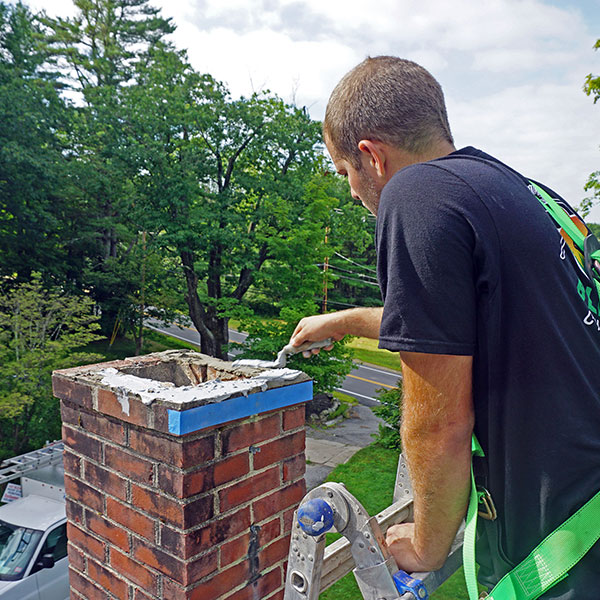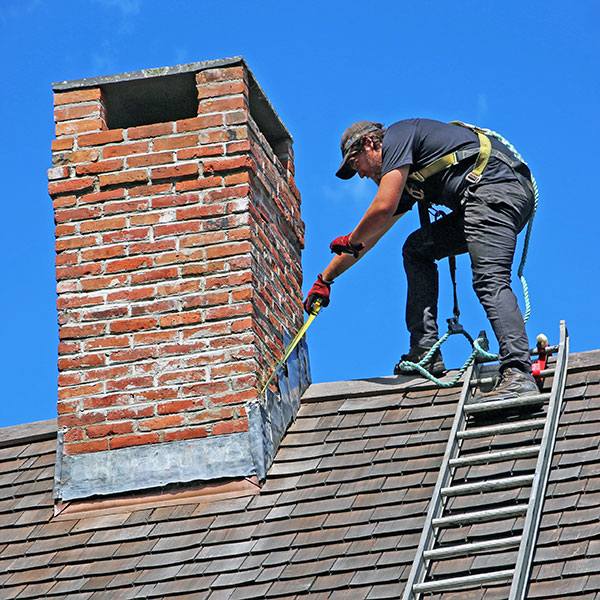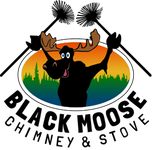Has your chimney suffered damage over the last winter season? Has damage been ongoing and now you’re worried it may have made your chimney unsafe? Regardless of the level of damage to your chimney’s masonry and structure, there are solutions. The first step is a professional chimney inspection to determine the kind of rebuilding/restoration services that are necessary to make your chimney safe and reliable again.
 Why chimneys become damaged
Why chimneys become damaged
Chimney leaks: Chimney masonry and its components are all susceptible to damage that leads to a leaky chimney. When water enters the system, it begins a cycle of decay that leaves your chimney in a compromised state. Freeze/thaw cycles cause water to expand within the brickwork, leading to larger cracking and decomposition. The chimney crown, chimney cap, flue cover, flashing and other components are designed to protect the chimney and help keep major chimney rebuilding projects from becoming necessary.
Damaged chimney liners: When clay, steel or cast-in-place chimney liners begin to crack or break, corrosive gasses created when fires burn have direct access to the internal masonry of the chimney. Bricks and mortar can decay and eventually result in a chimney that leans to one side or collapses completely and needs to be rebuilt. (A damaged chimney liner also puts building materials of the home at risk of fire.)
Weather & destructive events: Chimney restoration projects are often called for after many years of heavy rain and snow, extreme high and low temperatures, pounding hail, brutal winds, lightning strikes and other weather events. All these can wreak havoc on the bricks and mortar of a chimney.
Chimney fires: A fire inside your flue can be obvious, but it also can be fairly small and unnoticed. Smaller chimney fires start and extinguish on their own but over time can cause major liner and brick damage. As with problems stemming from a cracked chimney liner, chimney fires do their damage internally at first, and by the time the problem is obvious, the chimney may have become dangerous to live around and unsafe to use.
Types of Chimney Rebuilding Projects
Chimney structural damage comes in many forms. Your chimney inspector/chimney sweep will evaluate the condition of your chimney and likely recommend one of the following:
1. Partial rebuilding: Repairing or rebuilding only parts of the visible section of the chimney may be all that’s necessary if the damage is minor or moderate.
2. Rebuilding the entire chimney above the roof: Chimneys sometimes need to be completely rebuilt above the roofline. This will be recommended if there’s a concern that the chimney could collapse or become unable to efficiently draft smoke during a fire.
3. Complete chimney rebuild: When a chimney is severely compromised throughout its system, a total rebuilding project is usually called for.
 Getting Chimney Rebuilding Work Done in the Spring
Getting Chimney Rebuilding Work Done in the Spring
If you’ve just learned of or suspect serious damage to your chimney after the winter season, the best move is to schedule chimney rebuilding and renovation work in the spring once the weather clears. Here’s why.
Chimney sweeps and repair companies usually are not as busy during the spring months, so you’ll find it easier to arrange a convenient time for work to be done.
Mortar cures and sets up better in warmer temperatures.
Depending on the level of chimney structural damage, you might not be safe putting off repairs until the summer or fall.
Black Moose Chimney & Stove of Antrim, NH, provides professional, certified chimney inspections and complete chimney rebuilding services throughout southern New Hampshire. Call us today at (603) 525-7905 and get your chimney on the road to better health.


